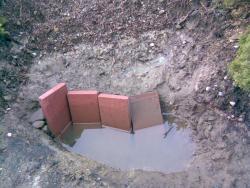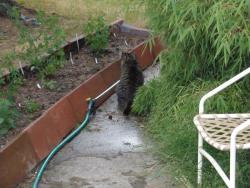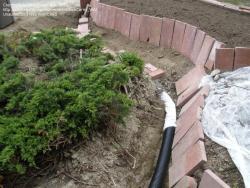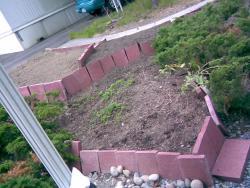Good luck with your project! Some work now will give you a GREAT garden bed for the rest of your life.
I think there's only one issue when you dig a hole or a "raised bed" below grade.
Once water gets INTO the hole you just dug, where can it drain down TO?
I forgot that water won't drain uphill, and created this mud wallow:

One solution is to keep the bed entirely "raised" and not rely on any part of the root zone being sunken below grade.

I assume your clay is so heavy that rain would fill the bed faster than it can "percolate" out the bottom of the bed. If that's true, it WILL turn into mud-soup with zero air every time it rains faster than the bottom of your bed can drain. Roots will start drowning as soon as that happens, and keep drowning until most of the water drains out of the amended soil (and you have to hope that turning into mud doesn't destroy all the structure of the soil).
What can you do? Provide drainage. You don't have to go totally bonkers as I did here:

Probably your amended soil WILL drain fast enough to keep up with most rainstorms, IF the water has some path by which it can exit the amended soil.
How?
Hopefully you have some slope or grade to work with. Ideally locate the bed
on top of a high spot in your yard. If you put it in a low spot, it will become a big mud puddle and grow nothing. You can put it on a slope. Even a slight slope is probably enough.
If you can't locate it in a spot where it's easy to provide drainage, you do have a problem.
In that case, it might
have to be a "very" raised bed. In other words, don't excavate or discard any clay.
Build taller walls and put your new soil on TOP of the old clay. You still want the lowest part of your new raised bed to be HIGHER than surrounding clay. Water can drain down from a "very" raised bed because even after it drains "down", it is still higher than the surrounding clay (it is "above grade").
Now it is happy to become just more run-off water, running over the clay surface down to whatever the low spot is, but AWAY from your bed's root zone.
- - - - -
If you have enough slope to provide drainage to a
partly sunken "raised" bed, you might still need a trench. Remember that water will only drain DOWN, never UP.
You need something like a trench or drainage pipe that connects the LOWEST point of your water-logged mass of new soil with a spot LOWER than the lowest part of your bed.
What I do, after removing the awful clay, is to scrape the exposed "floor" of the bed into a fairly smooth slope down to one edge or one corner of the bed. Obviously that has to be the lowest edge or corner.
Then I dig a slit trench from the low point of the bed to the low point in my yard. (I'm lucky to have a steep slope in one part of my yard, so I just lead water to that area and then it runs downhill all on its own.)
The trench can be just a few inches wide (I make it the width of my mattock's blade). If we have clay so nasty that we need to create drainage, the clay is probably hard enough to hold the shape of that slit trench for years. I don't even back-fill my slit trenches with gravel, and they have held up for years.
The only tricky part is to keep the floor of the trench to a fairly even slope. It can never dip down and then back up, because the low spot will hold water and kill roots nearby, and freeze int he winter and mess up your trench.
There are fancy ways to keep a trench's slope uniform using stretched string, rulers, lasers or whatever, but I just scrape it level by eye and then wait for a heavy rain.
The low spots fill right up with water. I stand a little down-slope and dig the trench below the big puddle to be even lower than where I guess the bottom of the puddle is. Then I use the mattock to remove the last plug of clay between the puddle and the rest of the downhill run. The water rushes out and erodes the rest of the trench's slope evenly, and drops some mud and silt in remaining low spots. Repeat once or twice, and you've leveled the whole trench.
This is easiest if you start at the bottom and work uphill, but you can also jump around but accomplish the same result eventually. Since "water finds its own level", it will tell you if any part of the trench is too high and blocks the lowest point in the bed from draining down to some low spot in your yard.
If you worry about guests breaking their ankles, you can back-fill the trench with drainage gravel. But that is expensive and HEAVY! I learned that after digging a honking big trench, and then realized that the back-breaking part had only BEGUN. Hauling enough gravel to fill that trench would have broken my back and my car's springs if it didn't break my bank account first. IF you dig a trench big enough to drop a perforated drainage pipe into, do that! Then only backfill a little gravel around the pipe.
Here are some photos of the time I turned into an insane mole-man and dug up the entire front yard.
http://garden.org/thread/view_...
That was so unnecessary!




